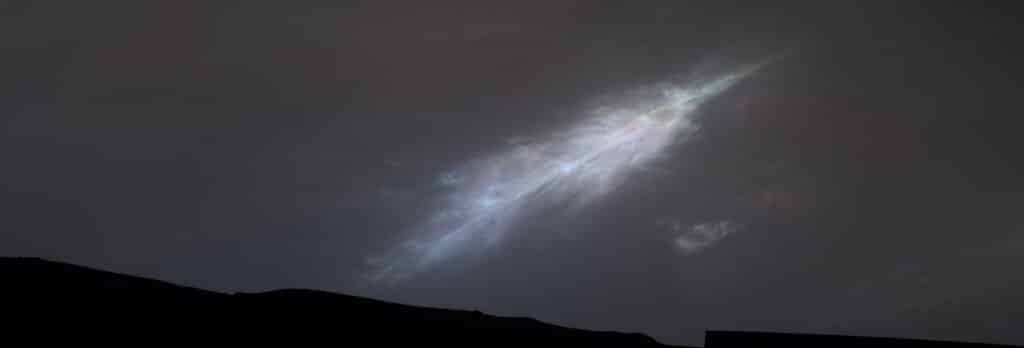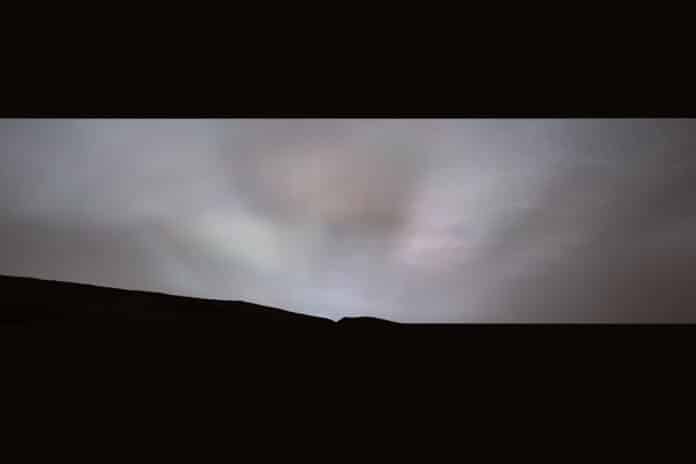NASA’s Curiosity rover captured rays of light that illuminated a bank of clouds. Known as crepuscular rays, these sun rays have been so clearly viewed on Mars.
The Curiosity captured the view as the Sun descended over the horizon on Feb. 2. The image was taken by Curiosity during the rover’s most recent study of twilight clouds, which expands on its observations of noctilucent, or night-shining, clouds from 2021.
The clouds in the most recent images appear to be at a greater altitude, where it is very cold, but most Martian clouds are made of water ice and hang no more than 37 miles (60 kilometers) above the surface. This suggests that dry ice, or carbon dioxide ice, that makes up these clouds.
Scientists can gain additional knowledge about the Martian atmosphere‘s composition, temperatures, and winds by observing when and where clouds form. Each panorama that Curiosity took of the Sun’s beams and the iridescent clouds was created by stitching together 28 photos that were delivered to Earth. The photographs have been altered to draw attention to the highlights.
More black-and-white navigation camera data from Curiosity was used in the 2021 cloud survey to provide a thorough look at a cloud’s structure as it moves. Nevertheless, the most current survey, which started in January and will end in mid-March, relies primarily on the Mastcam, a color camera mounted on the top of the rover that allows scientists to observe how cloud particles develop over time.

In addition to the image of sun rays, Curiosity captured a set of colorful clouds shaped like a feather on Jan. 27. When illuminated by sunlight, certain types of clouds can create a rainbowlike display called iridescence.
Mark Lemmon, an atmospheric scientist with the Space Science Institute in Boulder, Colorado, said, “Where we see iridescence, it means a cloud’s particle sizes are identical to their neighbors in each part of the cloud. By looking at color transitions, we’re seeing particle size changing across the cloud. That tells us about the way the cloud is evolving and how its particles are changing size over time.”
